Mitsubishi A5M Claude
Production Time 9 to 10 weeks
Shipment is by FedEx, UPS or DHL International Express Courier with a normal door-to-door delivery time worldwide of within 2-3 business days after dispatch. Due to the current volatility of world fuel prices, the amount mentioned here is our best estimate for DHL and UPS and may be subject to change at the time of shipping.

Model Description: Mitsubishi A5M Claude Wood Replica Scale Custom Model Aircraft
Manufacturer: Mitsubishi
Wingspan: 17.1 Inches (43.4 Centimeters)
Height: 5 Inches (12.7 Centimeters)
Scale: 1:25
$239.50
Production Time 9 to 10 weeks
-
United States dollar ($)
-
Pound sterling (£)
-
Euro (€)
-
Australian dollar ($)
-
Canadian dollar ($)
-
Singapore dollar ($)
-
Swiss franc (CHF)
-
Japanese yen (¥)
-
Danish krone (kr.)
-
Hong Kong dollar ($)
-
Norwegian krone (kr)
-
Swedish krona (kr)
-
United Arab Emirates dirham (د.إ)
General Product Description
Our PlaneArts Mitsubishi A5M Claude model exhibits unique, unrivaled quality and detailed design to come as close as possible to the accuracy of the actual plane. It comes as standard with a robust, durable base or stand which is available in a variety of different finishes designed to match your own personal requirements including solid wood, wood with polished metal supports or adjustable wood wall mount and will be ready within about 9-10 weeks from placement of order.
The Mitsubishi A5M Claude model is made of the finest kiln dried renewable mahogany wood (commonly known as Lauan or Meranti) which has undergone many stages of carving and meticulous and careful sanding giving the beautiful, finished museum quality masterpiece. Many collectors and model connoisseurs demonstrate their preference for genuine handmade and hand painted mahogany wood models rather than plastic or die cast (diecast) alternatives due to the overall look and totally different feel of the item - we trust you will find the same. We can however, if required produce the same model in Solid Cast Resin so just click and contact us for further information. Our craftsmen and gifted artisans ensure that our finely handcrafted model airplanes match the precise blueprint details of the original aircraft. The paint scheme, markings and parts are closely matched, reflecting the original aircraft. This stylish top-quality desktop replica model will surely enthrall anyone who receives this as a gift and for sure one of the most appropriate and desirably collectable gifts for any military aviation enthusiast and avid aircraft collector whilst also displaying a perfect resemblance to the actual real life version.
There are many types of military propeller aircraft, but the basic types are bombers, fighters, fighter bombers, spotter planes, transporters, patrol aircraft, trainers, and reconnaissance and observation aircraft. All these types of aircraft are used for different types of missions. If you're a fan of historic or present-day military aviation, our model aircraft will bring the excitement and character of these aircraft right into your own home. You can order a wood airplane model of a North American B-25 Mitchell Bomber, a B17 - Flying Fortress, or a P-51 Mustang Nervous Energy V not forgetting the Bf 109, Spitfire, FW 190, A6M Zero, P-38 and F4U. These classic, propeller airplane models are of the highest quality. Each is individually crafted by our expert craftsmen. They produce handmade scale mahogany airplane models of the finest aircraft from World War I and II to present day biplanes and triplanes.
If you require, we can also make the Mitsubishi A5M Claude model in any other military, government or even private livery or colour scheme you require and if necessary, in a different size or scale. Just click here to contact us with a description or photographs of what you require, and we will let you have a quotation for the necessary customization by return email. We can also make bespoke scale replicas of any other private / civil commercial airliner or airliners, helicopter, glider, gliders with engines, military jet, warplane jets, biplane, triplane, tail fin, spacecraft, rocket or NASA model you require in any airline, military or civilian livery or colors. We also produce model airships, blimps, dirigibles, blimps, boats, and ship collectibles. Wall plaque or seal for military, government or private customers. Again, by clicking here to contact us just let us know exactly what you need.
The Mitsubishi A5M Claude: The Prelude to Air Superiority in the Pacific
The Mitsubishi A5M, commonly known as the “Claude,” holds a significant place in the annals of military aviation history. As Japan’s first monoplane fighter aircraft with a retractable undercarriage, the A5M was a critical step forward in the development of aerial combat tactics and technology, setting the stage for its more famous successor, the Mitsubishi A6M Zero. This article explores the development, operational history, and lasting impact of the Mitsubishi A5M Claude.
Development and Design:
The Mitsubishi A5M was designed in response to a 1934 requirement by the Imperial Japanese Navy for a new carrier-based fighter. Mitsubishi’s team, led by the legendary engineer Jiro Horikoshi, aimed to create a fast, agile aircraft that could outperform any contemporary designs. The result was a sleek, all-metal monoplane that featured an open cockpit and a fixed undercarriage in its initial versions.
One of the A5M’s innovative aspects was its use of a low-wing configuration, which was not common at the time for fighter aircraft. This design choice significantly improved the aircraft’s aerodynamic efficiency and maneuverability. Powered by a Nakajima Kotobuki radial engine, the A5M achieved a top speed that was unmatched by its biplane contemporaries.
Operational History:
The Mitsubishi A5M first saw combat in 1937 during the Second Sino-Japanese War, where it quickly proved superior to the Chinese fighter aircraft of the time, including the Curtiss Hawk II and III biplanes. Its agility and speed made it a formidable adversary in the skies over China.
The Claude also played a significant role in the early stages of the Pacific War, particularly during the invasion of the Philippines and the Dutch East Indies. Despite being gradually supplanted by the more advanced Mitsubishi A6M Zero, the A5M continued to serve in secondary roles such as training and home defense throughout the war.
Notable Engagements:
One of the most significant engagements involving the A5M was the Battle of Khalkhin Gol in 1939. This conflict between the Soviet Union and Japan served as a crucial aerial combat proving ground. The A5M faced the Soviet Polikarpov I-16 fighters, where it demonstrated its combat prowess despite the harsh conditions and formidable opposition.
Technological Impact and Legacy:
The Mitsubishi A5M was not merely a stopgap fighter; it was a technological leap that influenced Japanese fighter design philosophy profoundly. The experience gained from the A5M’s development and operational use fed directly into the development of the Mitsubishi A6M Zero, which would become one of the most famous aircraft of World War II. The design philosophy that prioritized range, maneuverability, and speed was refined and perfected in the Zero, which took these characteristics to new heights.
Conclusion:
The Mitsubishi A5M Claude may not be as well-known as the Zero, but its impact on aerial combat and its role in the evolution of Japanese military aviation are undeniable. By breaking away from the biplane tradition and embracing monoplane designs with advanced aerodynamics, the A5M helped pave the way for the innovations that would soon follow. Its legacy is that of a pioneer, setting the stage for Japan’s air strategy in World War II and demonstrating the capabilities of modern fighter design.
| Weight | 6 kg |
|---|---|
| Dimensions | 11.7 × 17.1 × 5 in |



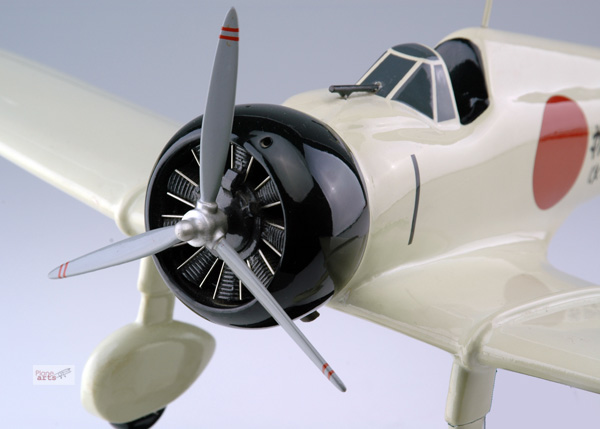

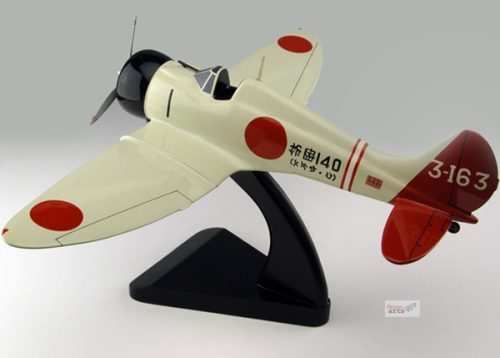

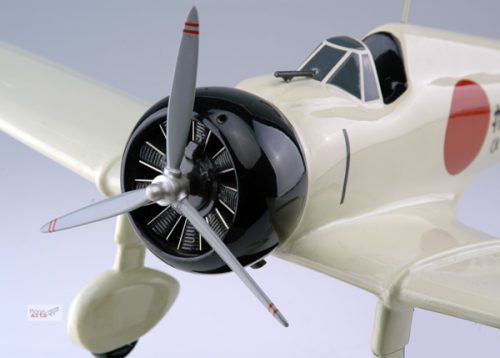
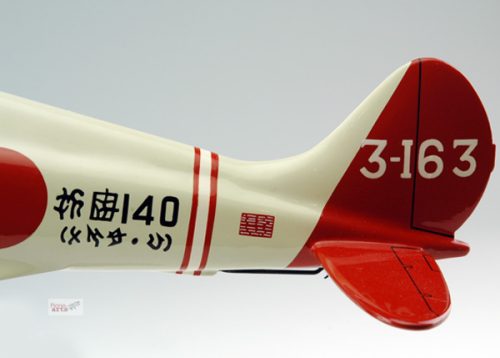
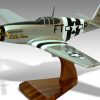

Reviews
There are no reviews yet.